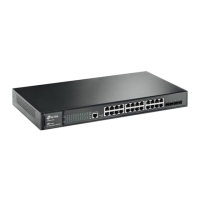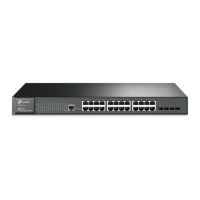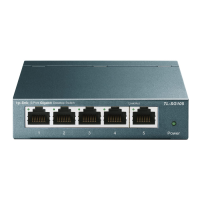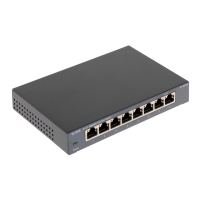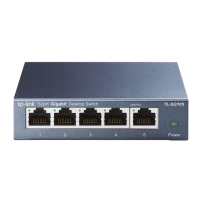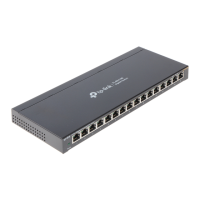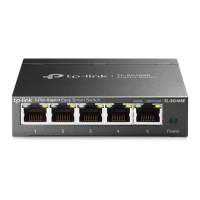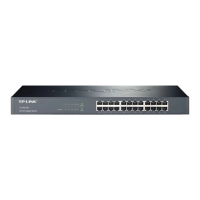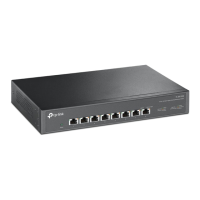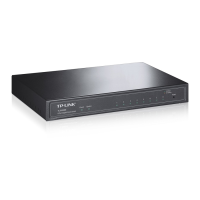17
Enter the subnet mask of the switch.
Enter the default gateway of the switch.
Note:
1. Changing the IP address to a different IP segment will interrupt the network
communication, so please keep the new IP address in the same IP segment with the local
network.
2. The switch only possesses an IP address. The IP address configured will replace the
original IP address.
3. If the switch gets the IP address from DHCP server, you can see the configuration of the
switch in the DHCP server; if DHCP option is selected but no DHCP server exists in the
network, the switch will keep obtaining IP address from DHCP server until success.
4. If DHCP or BOOTP option is selected, the switch will get network parameters dynamically
from the Internet, which means that its IP address, subnet mask and default gateway
cannot be configured.
5. By default, the IP address is 192.168.0.1.
4.1.6 System IPv6
IPv6 (Internet Protocol version 6), also called IPng (IP next generation), was developed by the
IETF (Internet Engineering Task Force) as the successor to IPv4 (Internet Protocol version 4).
Compared with IPv4, IPv6 increases the IP address size from 32 bits to 128 bits; this solves the
IPv4 address exhaustion problem.
IPv6 features
IPv6 has the following features:
1. Adequate address space: The source and destination IPv6 addresses are both 128 bits
(16 bytes) long. IPv6 can provide 3.4 x 10
38
addresses to completely meet the requirements
of hierarchical address division as well as allocation of public and private addresses.
2. Header format simplification: IPv6 cuts down some IPv4 header fields or move them to
IPv6 extension headers to reduce the load of basic IPv6 headers, thus making IPv6 packet
handling simple and improving the forwarding efficiency. Although the IPv6 address size is
four times that of IPv4 addresses, the size of basic IPv6 headers is 40 bytes and is only
twice that of IPv4 headers (excluding the Options field).
3. Flexible extension headers: IPv6 cancels the Options field in IPv4 packets but introduces
multiple extension headers. In this way, IPv6 enhances the flexibility greatly to provide
scalability for IP while improving the handling efficiency. The Options field in IPv4 packets
contains 40 bytes at most, while the size of IPv6 extension headers is restricted by that of
IPv6 packets.
4. Built-in security: IPv6 uses IPSec as its standard extension header to provide end-to-end
security. This feature provides a standard for network security solutions and improves the
interoperability between different IPv6 applications.
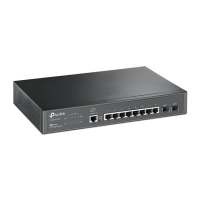
